Choosing Between Mesh Routers VS Powerline Adapters and Wi-Fi Extenders
Managing the wireless network of your home or business environment and making sure that internet connectivity is as good as possible can often be a great deal more complex than you anticipate. Even now in 2021, common barriers such as the thickness of walls and your distance from your router still make an enormous impact on the quality and performance of your hardware wirelessly connecting with the network. In recent years we have seen numerous innovations in wireless hardware to assist in combating these Wi-Fi issues and despite improvements in protocols, such as Wi-Fi 6 and 6e being announced, three main types of device are still the most popular way for wireless networks to be improved, mesh routers, powerline adaptors and Wi-Fi extenders. There is an element of crossover between each of these devices as their respective technology has improved over the last few years, but often you will find that the key to solving your poor Wi-Fi will be one or all of these devices. So today I want to explain what they each are and which one is best for your WiFi improvement needs in 2021
What is a Mesh Router?

At the most basic level, a router is simply a device that manages and allows the exchange of data going to and from your office/home building with the wider internet. There is more to it than that really, taking into account security, network handling and numerous network protocols, but essentially that is what a router is. A mesh router is nearly identical to that of a traditional router provided by your internet service provider (ISP). However, mesh routers in the same physical building, allow data to be exchanged between each mesh router point and allow devices significantly further away from your main router to still connect to the network and internet via these router checkpoints (often referred to as ‘nodes’ or ‘satellites). Other advantages of mesh routers are that data can be transferred wirelessly between each mesh point, that a mesh router coverage is virtually limitless if you keep adding mesh router nodes (ie mesh router devices) and each mesh router can still be used by multiple devices wirelessly and even with LAN connections. As long as they are within the WiFi coverage of your primary router, they will carry the data and internet connectivity as far as you need it to go.
Recommended Powerline Adapters in 2021
|
Google Mesh WiFi System (3-Pack) |
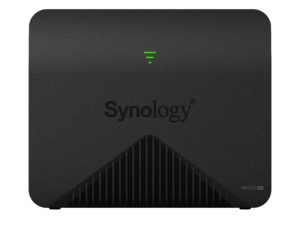
Synology MR2200ac Mesh x1 |
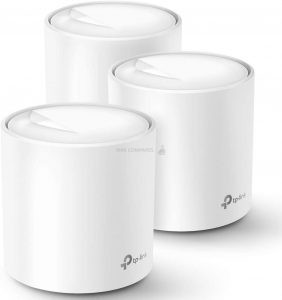
TP-Link Deco WiFi 6 Mesh WiFi System Deco X20 |
What is a Powerline Adapter?
![]()
A Powerline Adapter is a network to mains power transmission device. In brief, powerline adapters allow you to connect a network cable from your router to the mains power circuit of your home or business environment, then attach another powerline adaptor to a mains power outlet somewhere else in the building and send network connectivity over the circuit of the building. Generally purchased in pairs, you need one adaptor near your router and another adaptor in the room that you wish to connect to the network and internet. More modern powerline adaptors also include the ability to emit Wi-Fi connectivity from a powerline adaptor and create multiple wireless access points in your environment. Just bear in mind that powerline adaptors all arrive with an Mbps (Megabits per second, not MegaBytes) rating and the lower the rating, the lower the transmissions speed that will be possible over LAN and Wi-Fi from a powerline destination point to client WiFi devices (phone, tablet, laptop, TV, etc)
Recommended Powerline Adapters in 2021
|
TRENDnet Powerline 1300 AV2 Adapter Kit |
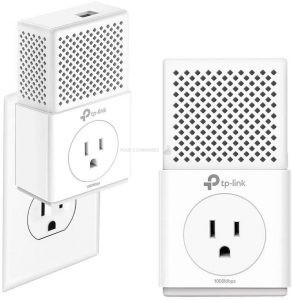
TP-Link AV1000 Powerline Ethernet Adapter |
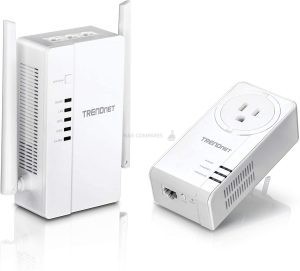
TRENDnet Wi-Fi Everywhere Powerline 1200 |
What is a Wi-Fi Extender?
![]()
As the name suggests, a Wi-Fi extender allows you to extend your network connectivity further in your home or business environment. Largely surpassed by modern mesh router systems, these are still quite useful for smaller-scale operations and those looking for a much more affordable alternative to mesh routers and only improving connecting WiFi coverage by a smaller degree. In most cases, a Wi-Fi extender is a comparatively brainless traditional router architecture that received an existing Wi-Fi connection and retransmits it to cover more distance. Unlike a mesh router, which uses a method of ethernet backhaul with a dedicated connection used for communicating between other mesh routers, a Wi-Fi extender or booster is a far simpler affair (typically only allowing a single extension point). Wi-Fi extenders arrive in multiple versions that cover both LAN and Wi-Fi connectivity when communicating with your primary router, so there is also an element of flexibility to add to its affordability even in 2021. Still, an extender will be less suitable for generally extending WiFi connectivity and is actually better suited to interfacing/connecting multiple LAN devices to a WiFi network (i.e the WiFi extender received the Primary Wifi signal, but delivers this to the RJ45 LAN ports on its hardware.
Mesh Routers VS Powerline Adapters and Wi-Fi Extenders – Price & Value
If your primary concern is the cost, then mesh routers will likely be far too pricey for you. This shouldn’t come as a huge surprise, given that each mesh router satellite is a complete router in itself. So unless you are going to take advantage of the full range of coverage and security benefits, you will not really see a return on your investment in mesh routers. Likewise, it’s worth remembering that you will need to replace your primary router (the one given to you by your internet service provider) with a mesh hub/satellite device in order to ensure they communicate. Next, is the Wi-Fi extenders/repeaters, which are arguably the least expensive item of the three, starting at around £20 in some cases. However, these do not provide the degree of coverage, flexible setup and performance available in powerline adaptors, nor they have the flexibility of Mesh. Which are only a fraction more expensive. However, powerline adaptors need to be purchased in units of 2 and therefore although they do make-up excellent value in terms of what you get for your money, it does mean that they will cost you more overall compared with Wi-Fi extenders.
WiFi Repeaters & Extenders |

Mesh Router Systems |
Powerline Adapters |
| —- 3RD —- | —- 2ND —- | —- 1ST —- |
Mesh Routers VS Powerline Adapters and Wi-Fi Extenders – Speed & Bandwidth
When considering the speed of mesh routers, powerline adaptors and Wi-Fi extenders, it is important to understand that by speed I really mean bandwidth. If speed is how fast water flows through a pipe, bandwidth is the total size and width of said pipe. Ultimately, you cannot exceed the speed in megabytes of the total bandwidth and maximizing your bandwidth is what you really need to do. So, taking bandwidth into consideration, the worst option for speed in a like-for-like setup, is going to be Wi-Fi extenders. Their performance is largely based on taking a Wi-Fi signal and repeating it, but a decent degree of the full potential bandwidth can be lost in this process. This can be mitigated by the use of ethernet connected Wi-Fi extenders and boosters, but at that point, you are better off looking at mesh or powerline adaptors. Mesh routers will likely give you the best bandwidth when used in larger collections of mesh routers in a tighter physical environment, as a mesh router’s total speed will still be dependent on its proximity to the primary router. However, if your building is on a single circuit, that is shared by many key areas that you want to cover, then Powerline Adaptors have the greatest potential by far in terms of speed and bandwidth. Powerline adaptors are also available in various options of bandwidth, starting at a modest 300mbps (30MB/s), and scaling up to multi-frequency and bandwidths coverage that can be combined into the 1000mbps (100MB/s) and above. But do bear in mind that this network connectivity may be shared (some powerline adapters have multiple LAN ports on them). Ultimately, only a handful of affordable routers ever exceed 1000Mbps (100MBs) on a single connection, so a 500-800Mbps powerline adapter for a single connection should be pretty sufficient, ultimately making it the best option for speed and bandwidth.
WiFi Repeaters & Extenders |

Mesh Router Systems |
Powerline Adapters |
| —- 3RD —- | —- 2ND —- | —- 1ST —- |
Mesh Routers VS Powerline Adapters and Wi-Fi Extenders – Security and Control
The security of a network upgrade can be measured in two key ways, the security of the data as it is passed from the wider internet to your device and the security against exploits from within your network to access packets of data on the fly. The least secure option of these three systems is most likely powerline adaptors, as a powerline adaptor has a comparatively small amount of internal software processes and this means that more advanced encryption and verification protocol between source and target is low. Additionally, powerline adaptors do not really have any form of third party software or graphical user interface that you can access and therefore are really brainless clients that rely on primary router security and control. Wi-Fi extenders and Wi-Fi boosters generally arrive with similar compatible security to your primary router, so although still not aggressively secure and customisable at least they still provide more options for configuration, encryption and private networks than a powerline adaptor. However, the best option of the three in terms of security and control is easily Mesh router systems. That is because mesh routers almost always arrived with dedicated client applications (for desktop and/or mobile devices) that allow you to manage, configure and monitor the wider network environment on the fly. Additionally, mesh routers will typically arrive with a dedicated encryption protocol to ensure packets of data cannot be captured via the backhaul connection between satellites and fianlly, most mesh router systems allow users to create multiple subnetworks with their own security credentials and protection. Mesh routers may be the most expensive way to expand your Wi-Fi coverage, but they certainly bring a lot of features and functionality that are largely absent in powerline adaptors and Wi-Fi extenders.
Powerline Adapters |
WiFi Repeaters & Extenders |

Mesh Router Systems |
| —- 3RD —- | —- 2ND —- | —- 1ST —- |
Mesh Routers VS Powerline Adapters and Wi-Fi Extenders – Coverage and Strength
Not to be confused with speed and bandwidth, the coverage and strength of these three network upgrades refer to just how much physical distance they are able to cover and the strength of that coverage as it expands. Wi-Fi extenders and boosters will typically give you the lowest improvements in coverage and strength, as they are simply repeating the bandwidth and speed that is available from where ever they are deployed. They may well create a brand new area of coverage within a circular area of where ever you set one up, but that performance will never exceed the same performance of a device accessing the original primary router from that same central location. Mesh routers on the other hand can be used to navigate around tricky physical obstacles in your hardware environment, such as walls, elongated corridors and older building materials that, although preferable for quality housing, are real Wi-Fi coverage killers. Mesh routers allow you to channel your Wi-Fi coverage around these obstacles with strategically placed mesh router satellites that all communicate omnidirectionally (is that a word? Basically communicating between multiple mesh points at once) So that rather than a chain of routers, it is more of a wide net. However, much like Wi-Fi repeaters and extenders, although coverage may well be improved, the total bandwidth and speed will be dictated by the location of a mesh router satellite’s proximity to the original router.
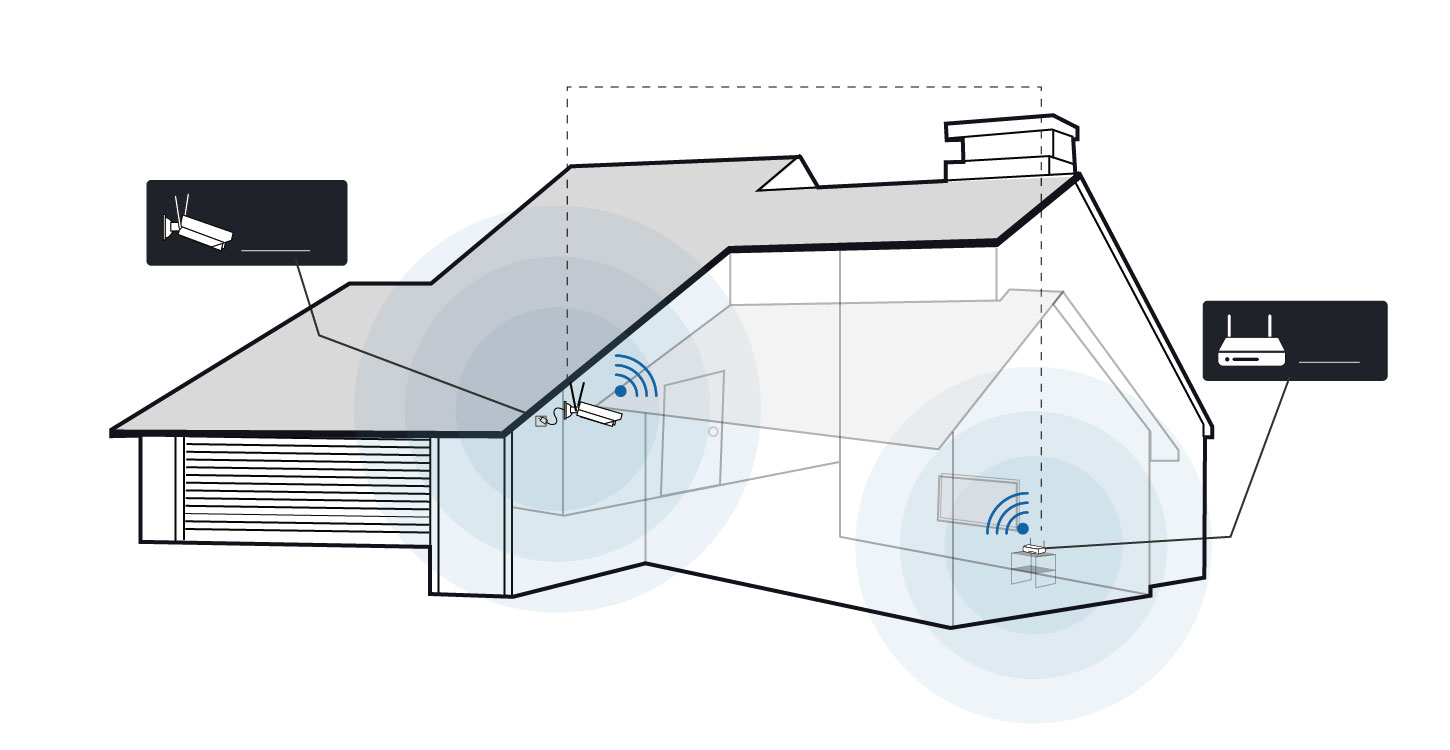
Unsurprisingly, powerline adaptors easily provide the best coverage and strength compared with mesh routers and Wi-Fi extenders, in spite of the lack of any meaningful software or control. This is because if you are setting up wider Wi-Fi coverage in a building with a single circuit, or even dual circuit architecture that can communicate, a powerline adaptor’s area of coverage is only limited by why the size of your building. As long as you have a plug point in the place where you need improved Wi-Fi coverage, you can get significantly better coverage and strengths, and therefore improved bandwidth and speed overall. Though, it should be added that powerline adapters and their WiFi connection (whether it’s a clone of your primary router settings or completely different) will not automatically switch your client device (phone, laptop, etc) over to the new connection as you move through a building. This means that your phone will STILL connect to the first connection point (regardless of how weak the signal becomes) if you are still even barely in its coverage (even if you are stood next to a more convenient powerline adapter). Only Mesh routers will allow your client device to move between WiFi router points without any confusion or coverage issues.
WiFi Repeaters & Extenders |

Mesh Router Systems |
Powerline Adapters |
| —- 3RD —- | —- 2ND —- | —- 1ST —- |
Mesh Routers VS Powerline Adapters and Wi-Fi Extenders – Conclusion
Whether you are considering powerline adapters, mesh routers or WiFi extenders, it is worth remembering that some of the best networks for home and business use with typically utilize more than one of these options. Additionally, as appealing as Powerline Adapters are (seemingly winning most of the points on the comparison) they still require you to have a supported mains power circuit environment, can lose connectivity on ‘flakey’ or old home electric circuits and (often overlooked) will not function with multi-plug adapters. WiFi extenders should typically be your last option, unless you are connecting them via a decent length Cat/ethernet cable through a wall etc OR use them in conjunction with a powerline adapter (so leveraging the ease of adapters Vs the security of the expander). Finally, mesh routers are the most secure, if not quite as easy to set up as Powerline Adapters, and factor connection self-healing and a much smoother connection to your network/internet as you walk through your building.
—== RESULTS ==—
WiFi Repeaters & Extenders |

Mesh Router Systems |
Powerline Adapters |
| Best for Budget
Best for LAN-to-Wifi Conversion |
Best for Software
Best for Old Buildings & Unusual Shape Areas |
Best for Single/Wide Circuit Buildings
Best for Latency, Bandwidth & Performance |
📧 SUBSCRIBE TO OUR NEWSLETTER 🔔 This description contains links to Amazon. These links will take you to some of the products mentioned in today's content. As an Amazon Associate, I earn from qualifying purchases. Visit the NASCompares Deal Finder to find the best place to buy this device in your region, based on Service, Support and Reputation - Just Search for your NAS Drive in the Box Below
🔒 Join Inner Circle
Get an alert every time something gets added to this specific article!
Need Advice on Data Storage from an Expert?
Finally, for free advice about your setup, just leave a message in the comments below here at NASCompares.com and we will get back to you.
 Need Help?
Where possible (and where appropriate) please provide as much information about your requirements, as then I can arrange the best answer and solution to your needs. Do not worry about your e-mail address being required, it will NOT be used in a mailing list and will NOT be used in any way other than to respond to your enquiry.
Need Help?
Where possible (and where appropriate) please provide as much information about your requirements, as then I can arrange the best answer and solution to your needs. Do not worry about your e-mail address being required, it will NOT be used in a mailing list and will NOT be used in any way other than to respond to your enquiry.
TRY CHAT
Terms and Conditions
This description contains links to Amazon. These links will take you to some of the products mentioned in today’s video. As an Amazon Associate, I earn from qualifying purchases


The BEST NAS of 2026.... ALREADY??? (UnifyDrive UP6)
How Much RAM Do You Need in Your NAS?
A Buyer's Guide to Travel Routers - GET IT RIGHT, FIRST TIME
Jonsbo N6 DIY NAS Case Review
The Best Bits (and Worst Bits) of NAS of 2025!
Minisforum MS-02 Ultra Review
Access content via Patreon or KO-FI
Discover more from NAS Compares
Subscribe to get the latest posts sent to your email.


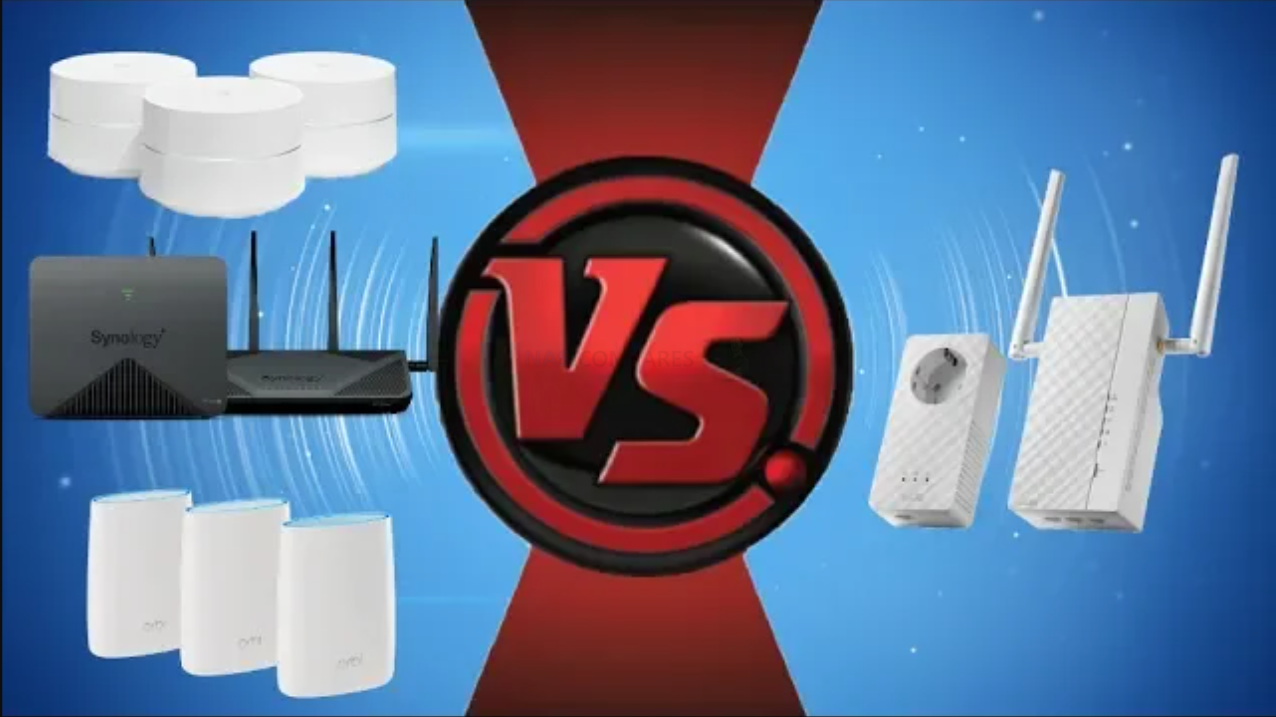
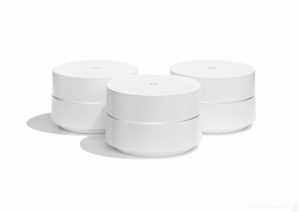
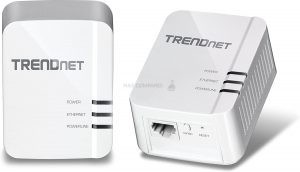



6:11 Helped me decide what to use for my home office where the Wi-Fi was unsteady. The Powerline solution created a steady internet which was very good.
REPLY ON YOUTUBE
Had nowt but trouble with powerline and extemders. Going to route an rj45 externally and use a network switch (for our gaming PCs) and then mesh for the WiFi.
REPLY ON YOUTUBE
glad you put this out. I work at Staples and keep getting asked these questions.
REPLY ON YOUTUBE
4:00 Might have been a good point to mention pass through adapters.
REPLY ON YOUTUBE
Thank you ????
REPLY ON YOUTUBE
One thing about powerlines, many houses have two ring mains in the house, so will only operate in half the house
REPLY ON YOUTUBE
Total agree, PLAs are easy to setup, reasonably priced, give consistant performance and very easily expandable but just adding more PLAs.
Even an old cottage that had radial wiring and stone walls worked well enough to stream TV, Youtube on a couple of laptops and phones from a 4G+ router the other side of the house! Dead easy always use direct into the wall socket – using a power strip, surge filters etc reduce performance.
REPLY ON YOUTUBE
Rooter
REPLY ON YOUTUBE
Thank you, exactly the information I was looking for. Much appreciated.
REPLY ON YOUTUBE
Legend. Excellent Info !
REPLY ON YOUTUBE
Thanks very well explained , even for dummies like me on these things .i think the power line adapter would be what i need . one spot where wifi drops in and out constantly, my question is what do i plug into the LAN at the receiving end . i understand i can plug laptop to it but what about wifi for phone and google nest ? is there some sort of a receiver or something .
REPLY ON YOUTUBE
@nascompares What about MOCA 2.5 and 3.0 compaired to the options in this video?
REPLY ON YOUTUBE
Is it possible to expand my existing 4G router to be a mesh wifi system.
REPLY ON YOUTUBE
Rooter vs Router – Rooter is for clearing roots from drain pipes and a Router is the route traveled between addresses, at least in the USA ????
REPLY ON YOUTUBE
Having just seen some specific reviews of powerline products I’m somewhat disappointed by the lack of actual tests to demonstrate the claimed speeds. Of course this is 2 years ago, so no surprise there.
REPLY ON YOUTUBE
Really good and in-depth comparison. Any thoughts on combining them E.G. plugging the base mesh into a powerline extender.
REPLY ON YOUTUBE
Very informative sir. Thank you
REPLY ON YOUTUBE
I got 3 Powerline TP-LINK wifi, and in Web setting it also has mesh feature, obviously my old Asus router had to not support. ????
REPLY ON YOUTUBE
You forget to mention that Powerline extenders even though are such as 1200 or 2400 the maximum you will ever get is about 300 to 500Mbps. In real life though it’s about 100Mbps by the time you go about 2 or 3 rooms away. A fair few of the plus as well, even though rated at 600Mbps also only have 10/100Mbps ports so don’t have the ability to go over 100. If you have a fast internet connection over say 300Mbps then you are going to have to run a Cat5/6 cable to the other room and then have a local gigabit switch or another gigabit router with wifi. I have 900Mbps and the other gigabit switch was the only way I could get a tidy connection in other rooms. Please don’t be fooled by the 1200 or 2400Mbps ratings!
REPLY ON YOUTUBE
I’ve tried Powerline, and Extenders both were TRASH! They worked for a little while, but eventually stopped working. Got fed up after a while. Then I got the Mesh Wifi and now i’m a happy man! I get great speeds in dead spots that were all over my house. The mesh network i’ve had for 3 years and it’s been stable no issues with my wifi coverage nor speed. You gotta pay to play. I have no issue paying a few hundred dollars for a mesh system, because it does what it says it will do.
REPLY ON YOUTUBE
Low sound
REPLY ON YOUTUBE
MoCA adapters bear mentioning with rollout of 5G cellular solutions.
REPLY ON YOUTUBE
Hi. Excellent video. I’ve got the TP link AV1000 kit and have two units in the lounge that supply Internet access to my TV and Bose Soundtouch system. I have recently moved my PC to the office. Prior to this, the PC was in the lounge connected to the
TL-WPA7617 via RJ45 cable. Now, when I connected the TL-WPA7617 in the office, the speed test on PC was at best 4mbps compared to 38mbps in the lounge. ???? If the office at the rear of the bungalow is on a different ring main, would this cause the slower speeds or would it not work at all? My bungalow is 2 years old. Thank you.
REPLY ON YOUTUBE
Thank you for this! 🙂
REPLY ON YOUTUBE
Great content thanks.
I was going to buy a mesh system but you have helped me save some cash. I have decided to buy into the powerline technology.
Cheers
REPLY ON YOUTUBE
BEST REVIEW EVER, CLEAR AND CONCISE, SPOT ON !
REPLY ON YOUTUBE
In my experience, mesh network delivers WAY higher speeds but powerline is better for gaming. I have both. Mesh network for the rest of my house and devices and powerline adapters hooked up to my gaming PC. My mesh network receives staggering speeds of 300-350 mbps (on a 300 mbps plan mind you). My powerline adapters I get about 40 mbps. The big difference is packet loss. My mesh network I get about 1% packetloss which doesn’t sound like much but for gaming it is a big deal. My powerline adapters never have packetloss, and don’t really need a high download speed for games anyways. What I do is switch to the mesh network if I have to download a large patch or game, then back to powerline when actually gaming.
I don’t regret either purchase at all. My modem and router are in the corner of my basement in a 4000 sq foot house and I get speeds 250-350 mbps in the entire house. Perfect for streaming and whatever else you throw at it then I have a stable ethernet powerline connection to my gaming PC albeit slower DL speeds.
REPLY ON YOUTUBE
too much talk, no real world test, no proof
REPLY ON YOUTUBE
after trying all, the best solution is still an ethernet connection
REPLY ON YOUTUBE
You have a natural talent for speaking to non technical people. Your use of hand gestures, helpful terminology and comparisons are truly rare in this field. As a techie myself, you’re a great teacher.
REPLY ON YOUTUBE
It’s route 66 get over it. ???? As an American i didn’t notice that we do pronounce it like that.
REPLY ON YOUTUBE
Your home or business repeated often…Premises, Property(hmmm)?
REPLY ON YOUTUBE
Perfect, now I can shop
REPLY ON YOUTUBE
thanks man! i never considered a powerline adapter till now. going to buy one and test. other options i have tried but only the powerline remains obscure
REPLY ON YOUTUBE
I found all this talking too common and a bit misleading. Like for example powerline adapters work more or less only on a single circuit, never show the speed in the specifications and losing more than 50% of speed if on the different circuits.
When do a review like this need to test all three at the same time and show the speed tests results in real time. Otherwise all this speech is not supported with anything and in reality is another blah-blah-blah to get views. Though, can speak for sure. Have you ever tried acting or recording books on tapes?
REPLY ON YOUTUBE
With the Mesh basically they come with one router and the rest called satelite, the router is connected through ethernet cable to the home modem (main router), you may not need to replace your service provided router/home router. That is what has been advertised with Mesh products.
REPLY ON YOUTUBE
I’m currently looking at putting my old router upstairs using a powerline , i’ve tried WiFi externders and they have always been poor
REPLY ON YOUTUBE
I have tested MANY brands of powerline adapters for customers since they first appeared about twenty years ago. I have yet to see one work as advertised. Usually, I would rate performance below-fair to poor; and NEVER stable enough for streaming or Zoom/Skype video.
It might work in a test lab, but in a real home, you have appliances with high inductance motors and heating elements, and a gazillion little cheap switching power supplies for your phones, laptops, video games, smart speakers, etc. Every one of these interferes with the signal a little bit (some by a lot) and the cumulative effect makes the technology unusable in most household environments. The inductive “whomp” of an AC or fridge motor starting up is enough to break the link between the base and repeater so you have to wait for it to renegotiate the connection. Just having the signal cross breakers in the panel will cut your bandwidth in half or more.
REPLY ON YOUTUBE
Have you looked at the Devolo Magic 2 WiFi Next, which is a combination of powerline a extender and uses mesh technology also?
REPLY ON YOUTUBE
I’ve been enjoying your content whilst I research my first prebuilt NAS to take an old microserver out service, I think you’ve missed something with these powerlines, I have been using them for years, upgrading them as each new spec drops to get myself a ‘fatter pipe’, also used in many different properties and whilst they have proved to be the most reliable of connections the bandwidth you get is never what it says on the tin, my experience is ~25-30% of its rated value in a multiuser environment with more than three powerline plug it has quite a drop off unless you have the later devices like AV2 600 onwards which have mimo, so its negatives are not a lot different to wifi. I’vw never even managed to hit rated speeds with plugs in the same room.
There’s also a bit of a side effect if you move to G.fast broadband in that Powerlines operate on a similar frequency and so you can cause yourself a lot of grief with an adaptor in the vicinty of your modem/phone line due to how sensitive G.fast is…..ask me how I know 🙂 a number of open reach calls regarding dropping sync rates until I moved these devices.
This year I decided to give Wifi a bash again because the wiring in my new house extension killed the performance of my AV2000 down to as paltry 50Mb, so setup my self up with some Wifi 6 Huawei/Honor routers which are cheap ( £30 each for dual core, £50 each for quad core router) can be configure in mesh/repeater/bridge and have a number of LAN ports on board, cheap due to no extra radios for backhaul but you can do wired backhaul if you need to or just accept bandwidth loss from repeating and these things have trumped powerline for the first time. I’ve never had such good coverage or speed, point to point when setup on 160Mhz I am maxing my Gb LAN ports on data transfers, also on the mesh side, seamless transfer from AP to AP even when on a VOIP call, Wifi is getting good. At these prices, basically the price of an extender, these are awesome.